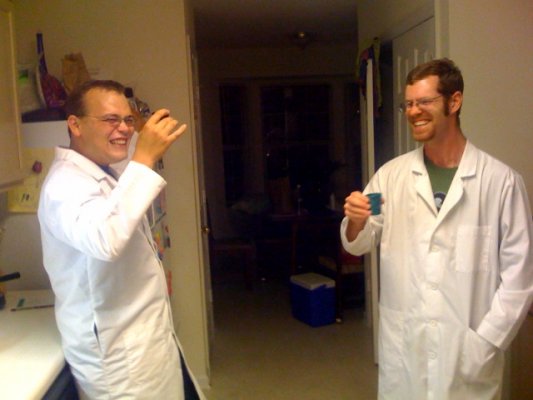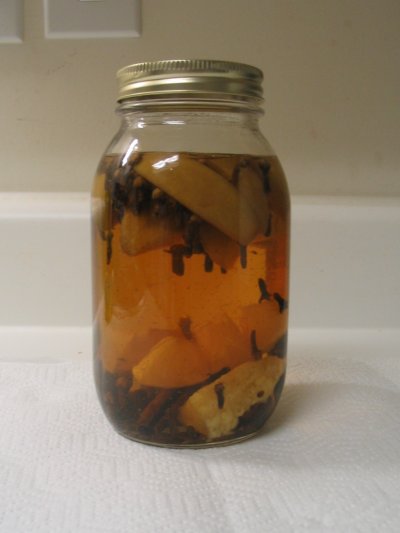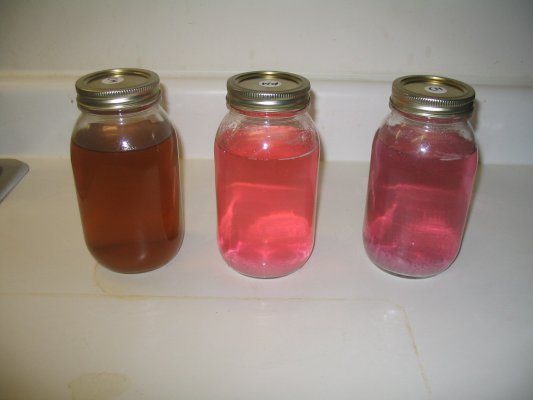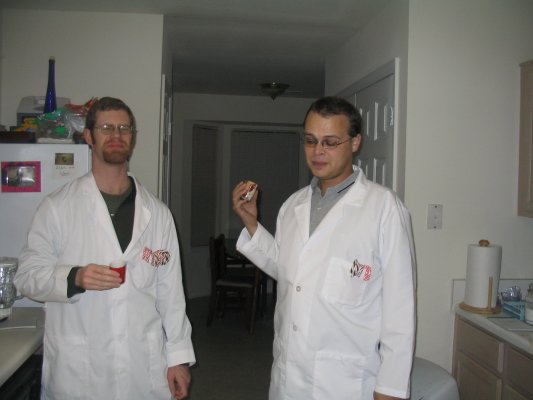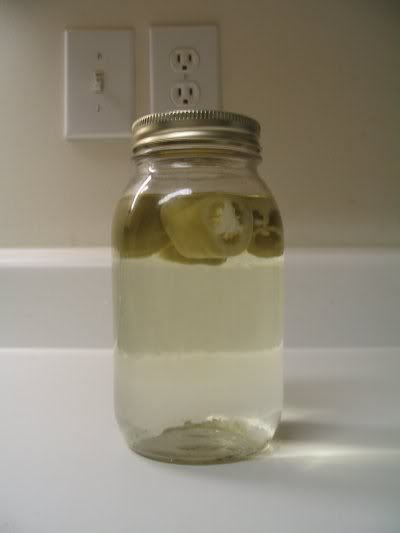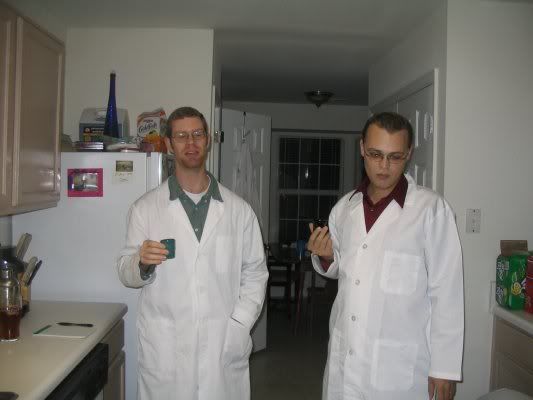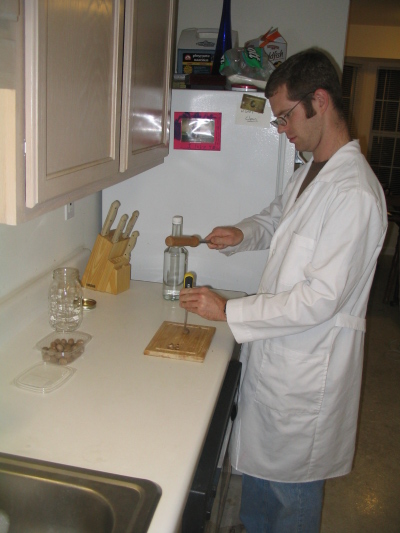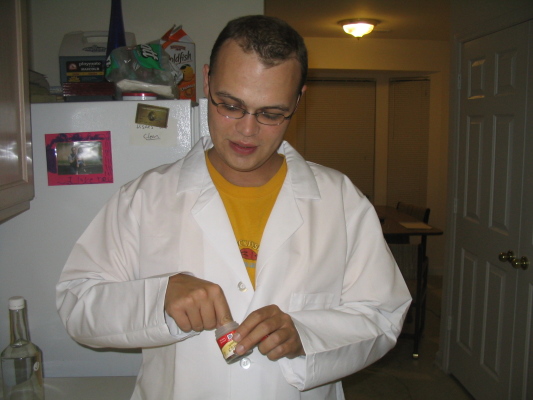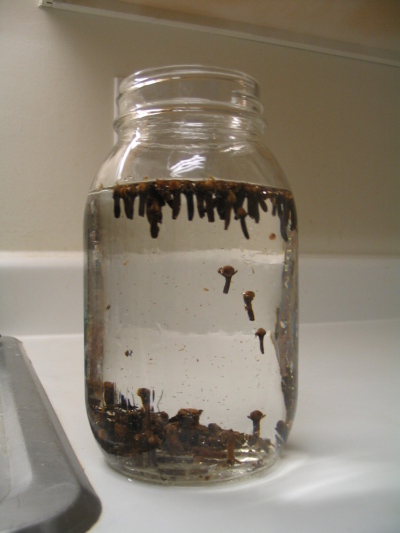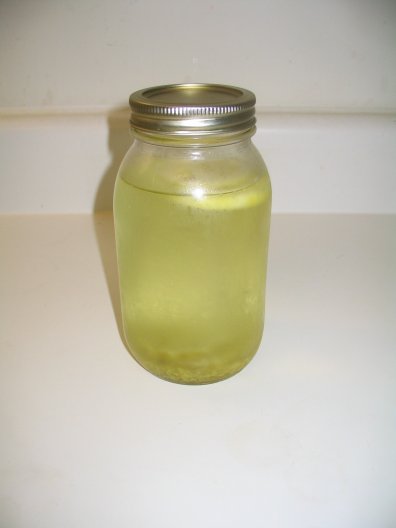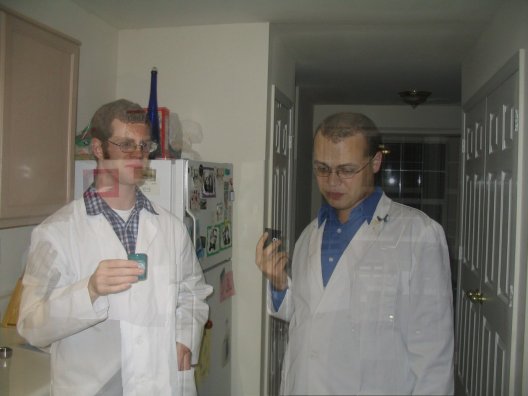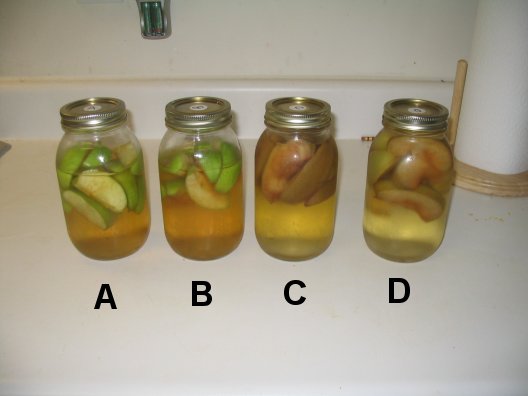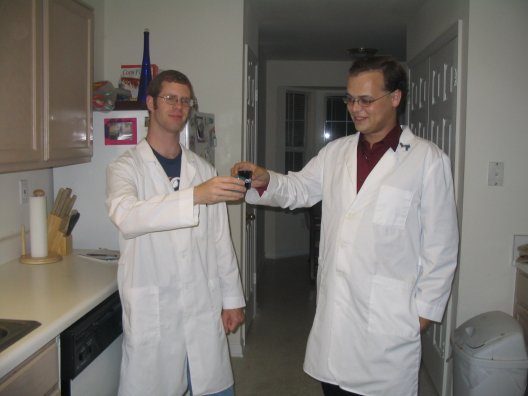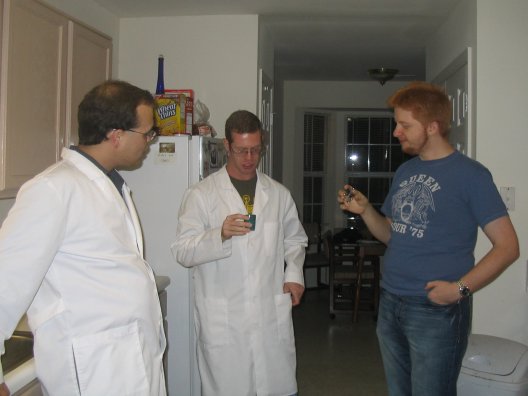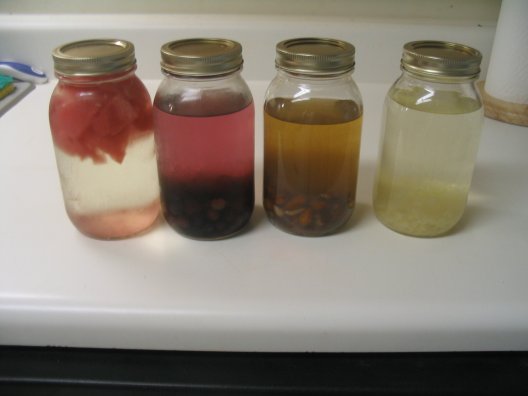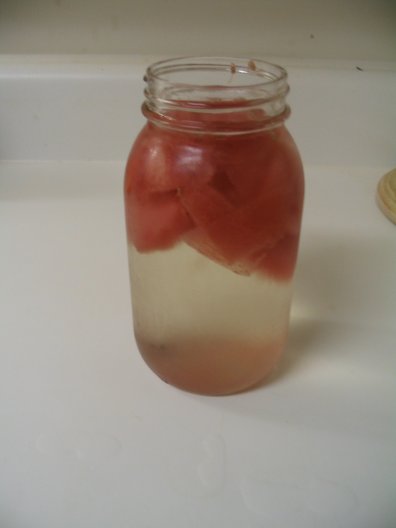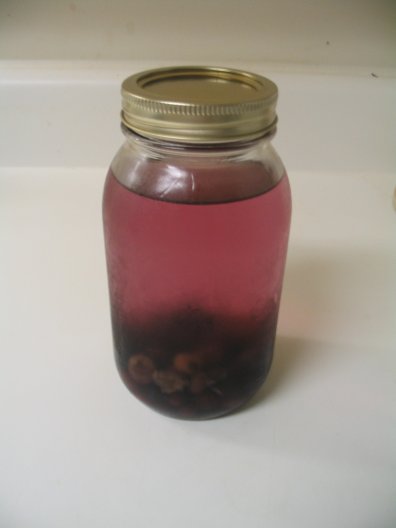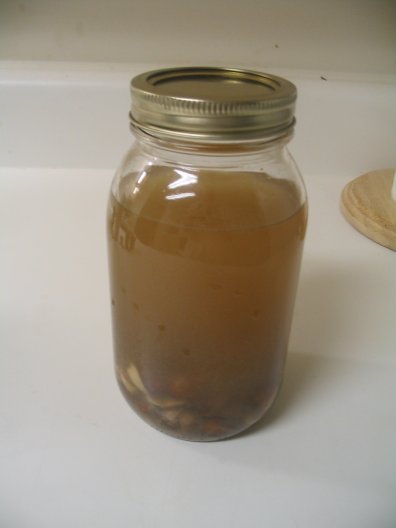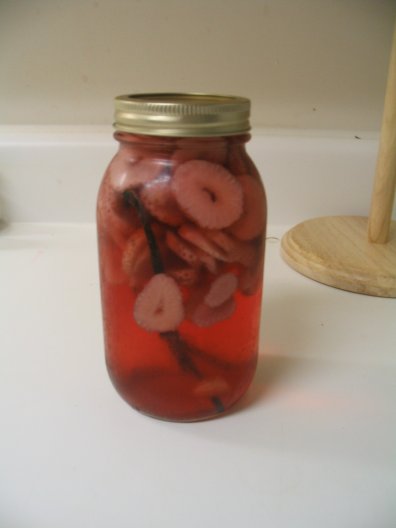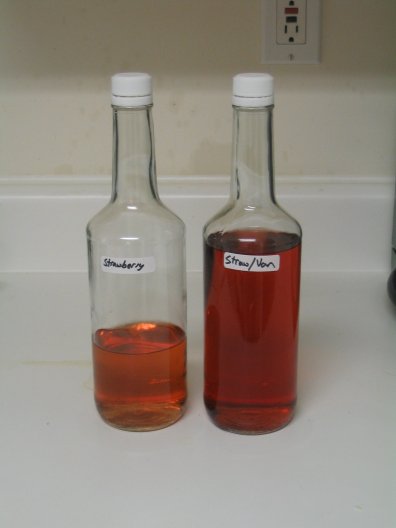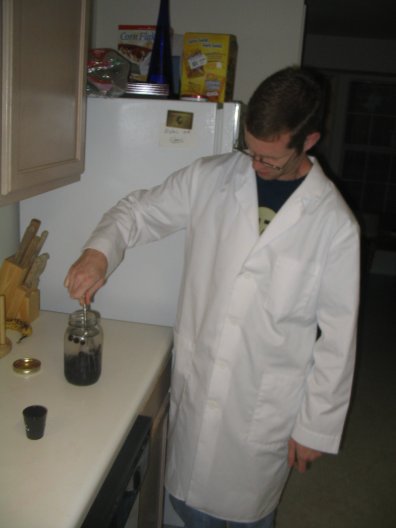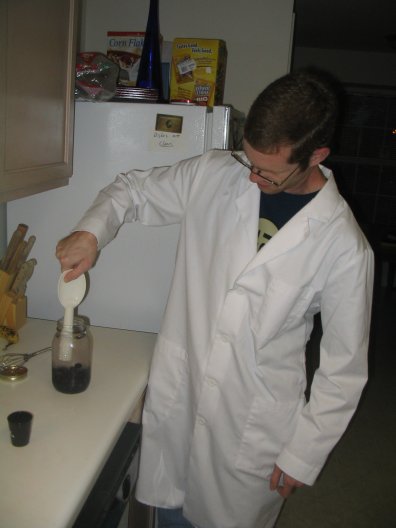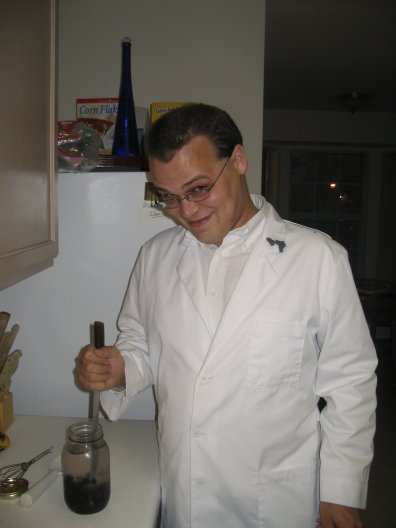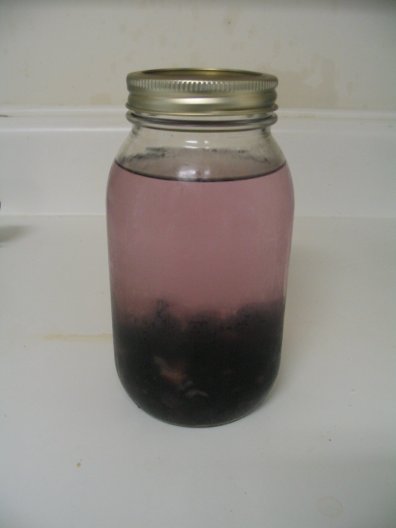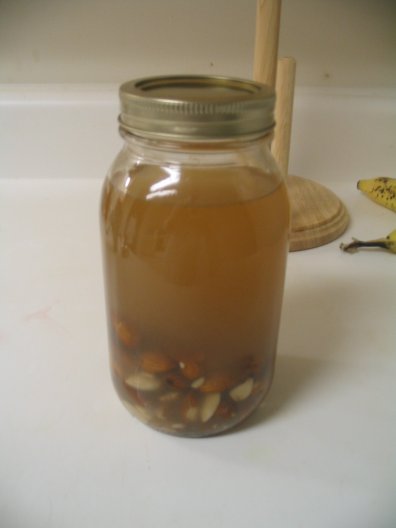Iiiit's Bacon!
![]() It is finally time to revisit our attempt at creating a bacon infused vodka. This experiment, perhaps the most disturbing bacon concoction since the Vodka God's Super Pork Bacon Bomb, is in fact twofold; in order to increase our odds of discovering the perfect bacon infusion method, we are peer-reviewing a method found on the blog Brownie Points, as well as a method of our own devising.
It is finally time to revisit our attempt at creating a bacon infused vodka. This experiment, perhaps the most disturbing bacon concoction since the Vodka God's Super Pork Bacon Bomb, is in fact twofold; in order to increase our odds of discovering the perfect bacon infusion method, we are peer-reviewing a method found on the blog Brownie Points, as well as a method of our own devising.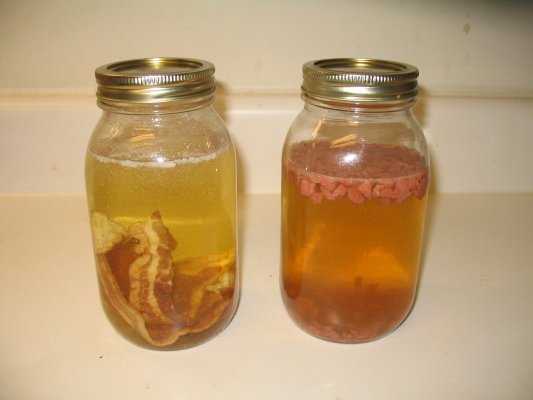
Here is an overhead view of the real-bacon infusion, to show just how much fat had to be filtered out.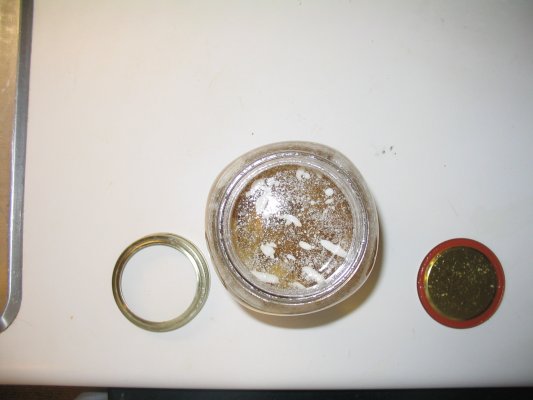
We began by straining both batches of vodka through cheesecloth into clean science jars. We then placed the jars into the freezer, which theoretically would solidify much of the remaining fats, allowing us to perform the second filtration stage.
After several days in the freezer, both jars had a visible layer of sediment at the bottom.
We strained each vodka again, this time using a coffee filter. As we have encountered before, the cold vodka flowed very slowly through the filter. Rather than hold it in place for long periods of time, we attached the coffee filter to the funnel using a few binder clips around the edges.
At this point, it was time to taste the vodka. We decided, for better or for worse, to taste the fake bacon infusion first. I took the first sample, and quickly spat it into the sink.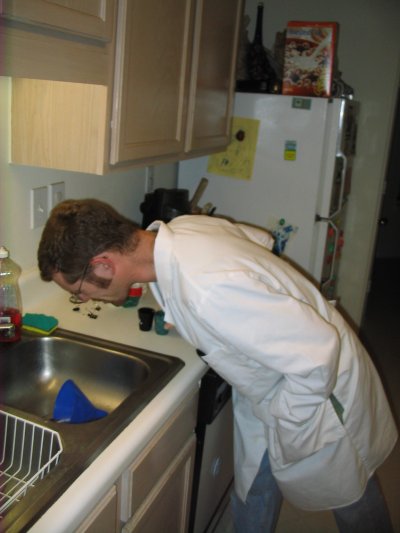
Though we usually avoid using artificial ingredients in our infusions, we had hoped that using artificial bacon might eliminate the residue that real bacon leaves, particularly in the Vodka God's attempt. However, I can only describe the results as an atrocity. From the very instant this substance made contact with my lips, I was overcome by revulsion. I was only able to process the very front end of this taste sensation, and had already spat it out before it really registered. If you can imagine extracting the almost-but-not-quite flavor of artificial bacon bits into a liquid form and drinking it straight up, with an uncut alcohol kick for good measure, you might imagine what this was like. Which is exactly what it was, brainiacs that we are. All in all, it was quite possibly the most horrifying experience I have been exposed to in the making of this blog.
As if reacting to what it was witnessing, my long-serving Powershot A70 camera chose this moment to drop stone dead. As a result, the rest of the photos (and probably for the next few posts, at least) were taken using Wayland's iPhone, so please excuse the lower image quality.
In spite of my reaction, Wayland dutifully drank his sample in the name of science. The second portion quickly rejoined the first.
"Ugh. That's salty and disgusting," Wayland wrote. "I don't think I'll ever burn that off of my taste buds as long as I live. The thing is, it does taste a lot like bacon bits. But without the crunch, you realize just how bad imitation bacon bits are. Without the crunch, they are horrible pieces of evil destined to destroy your taste buds."
It is interesting to note that while I have reacted poorly to several of our infusions, this is the first time that Wayland has ever had a spit-take with our infusions. He may not always like them, but he always at least gets them down. It seems that the man who once drank bottles of Cisco in college (and woke up fresh the next morning) has finally met his match.
In accordance with several international laws, we opted to rid the world of yet another potential weapon of mass destruction, and poured this vodka down the sink.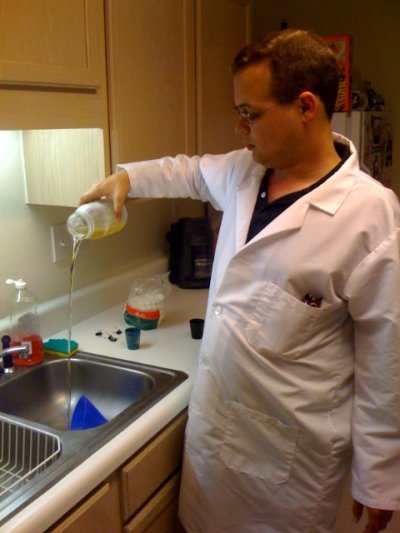
At this point, it was quite late, so we decided to postpone tasting the real bacon infusion for another night. The next morning, however, Wayland skipped town, putting thousands of miles between himself and this experiment, and did not return for a week. He claimed that he was on vacation, and had planned it months before. I knew the truth, though. It took the entire week just to clear that taste off of the palate.
Eventually, however, we knew we had to finish the evaluation. We had much higher hopes for the Brownie Points batch; after all, it had been tried before, apparently with decent results.
We poured two samples, raised our science glasses and... drank!
As we had hoped with all of our might, this batch was much better than the other. "It's a little rough on the front end," wrote Wayland, "but that's definitely bacon. It's salty, but not overwhelmingly bad-salty like the artificial bacon bits. I think it captures the bacon flavor quite well, although I admit it is a bit unsettling to drink bacon."
I believe I spoiled the test by taking the full shot Wayland handed me. (We normally do half shots for experimental sampling.) It was difficult to get down at first, but once I began to process the taste, I found it to be a fair representation of bacon. Indeed, there were instants where I found it quite tasty. This is certainly a vodka to be sipped in small doses, but I think it is quite successful.
So, there you have it. Sorry it took so long, Katherine! We're ready whenever you are.